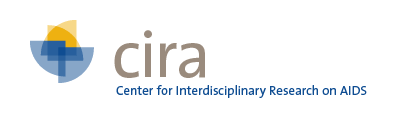
Principle Investigator(s):
Funder: National Institute on Drug Abuse
Project period: 07/01/2019 - 05/31/2024
Grant Type: Research
Further Detail
Abstract Text:
Opioid use disorder (OUD), HIV and hepatitis C (HCV) are co-occurring epidemics—a syndemic—among people who inject drugs (PWID). While effective interventions exist to prevent and treat all three conditions, the United States (US) has seen a 200% surge in overdoses linked to opioids since 2000, and a rise in acute HCV infections since 2010. In addition, an outbreak of HIV in Scott County, Indiana in 2014-2015, led the Centers for Disease Control and Prevention (CDC) to list 220 counties in the US as high-risk for HIV and HCV epidemics among PWID. Within the past year, new outbreaks of HIV among PWID have been reported in multiple states across the US, including West Virginia (WV), Ohio (OH), Kentucky (KY) and Massachusetts (MA). The current tools being used to target and manage responses to new outbreaks are inadequate to the task of stemming their spread and impact: syndromic surveillance can identify, but not predict new overdose events; rates of undiagnosed HIV and HCV infection remain high, particularly among young people; and interventions to prevent and treat OUD, HIV and HCV do not reach the vast majority of PWID who need them. I am proposing an innovative, interdisciplinary research program integrating spatial epidemiological methods, spatiotemporal regression models, Bayesian learning techniques, operations research and sequential decision- making methods to address the deficiencies in contemporary approaches to this syndemic among PWID. Leading a team of researchers, public health experts, clinicians and other front-line service providers, I will develop new predictive algorithms to map evolving community risk for overdose; novel adaptive approaches to hotspot detection for HIV and HCV and; algorithms to guide the pre-deployment and micro-targeting of prevention and treatment interventions for all three diseases to reach those most at risk and in need. All of these state-of-the-art methods will be freely available in a suite of web applications to allow practitioners to visualize the local interaction between these three interlocking epidemics. In addition, the web application will allow users to target services for PWID for OUD, HIV and HCV as well as assist decision-makers in optimal responses based on epidemiologic and economic considerations. Preliminary work on these algorithms and a prototype of the web applications are now underway with open-source data on overdose from Cincinnati, OH and data from OH and Connecticut have been obtained to scale-up this work. This project thus represents a groundbreaking effort in which the latest insights from a variety of scientific disciplines will be combined to offer new epidemiological insights into the interactions between OUD, HIV and HCV at the local level and for rapid implementation into the field to ensure timely public health impact on OUD, HIV and HCV among PWID in the US.

